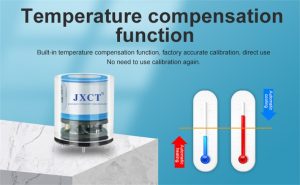Indoor air quality is a significant concern, as people spend the majority of their time indoors. Poor air quality can have adverse effects on human health, comfort, and productivity. One crucial aspect of indoor air quality management is the detection and monitoring of gases and pollutants. Gas sensors play a vital role in identifying and quantifying the presence of harmful gases in indoor environments. In this article, we will explore the impact of gas sensors in indoor spaces and how they contribute to creating healthier and safer living and working environments.
Understanding Gas Sensors:
Gas sensors are devices designed to detect and measure the concentration of specific gases in the surrounding environment. They work based on various principles, including electrochemical, semiconductor, optical, and thermal conductivity. Gas sensors are capable of detecting a wide range of gases, such as carbon monoxide (CO), nitrogen dioxide (NO2), volatile organic compounds (VOCs), and many others. By continuously monitoring gas levels, these sensors provide valuable insights into indoor air quality and enable timely corrective actions.
Importance of Gas Sensors in Indoor Environments:
2.1 Health and Safety: Gas sensors play a critical role in ensuring the health and safety of occupants in indoor spaces. For example, carbon monoxide is a deadly gas that is odorless and colorless, making it difficult to detect without proper equipment. Carbon monoxide detectors, which incorporate gas sensors, alert occupants when dangerous levels of this gas are present, allowing them to evacuate or take appropriate measures to prevent poisoning.
2.2 Pollution Control: Indoor pollutants, such as VOCs, formaldehyde, and ozone, can originate from various sources, including building materials, furniture, cleaning products, and cooking appliances. Gas sensors help identify and quantify the presence of these pollutants, enabling better ventilation strategies, source control, and pollutant removal. This leads to a cleaner and healthier indoor environment, reducing the risk of respiratory problems, allergies, and other health issues.
2.3 Fire Safety: Gas sensors also play a crucial role in fire safety. Smoke and flammable gases, such as methane and propane, are detected by gas sensors integrated into smoke detectors or fire alarm systems. Early detection allows for timely evacuation and prompt activation of fire suppression systems, minimizing property damage and the risk of injuries or fatalities.
Applications of Gas Sensors in Indoor Environments: 3.1 Residential Spaces: Gas sensors are widely used in residential buildings to ensure the safety and well-being of occupants. Carbon monoxide detectors and smoke detectors with gas sensors are commonly installed in homes, providing early warning of potential dangers. Additionally, gas sensors can help identify gas leaks from stoves, water heaters, or natural gas pipelines, preventing accidents and ensuring optimal indoor air quality.
3.2 Commercial and Industrial Settings: Gas sensors find extensive applications in commercial and industrial environments, where the presence of various gases poses significant risks. Industries that handle hazardous materials, such as chemical manufacturing or oil refineries, rely on gas sensors to detect leaks and monitor volatile compounds. In office buildings, gas sensors assist in managing ventilation systems and controlling indoor air quality parameters to maintain a comfortable and productive workspace.
3.3 Healthcare Facilities: In hospitals and healthcare facilities, gas sensors are crucial for maintaining a safe environment for patients and staff. They monitor the levels of anesthesia gases, sterilant gases, and other potentially harmful compounds, ensuring compliance with safety regulations. Gas sensors can also help control ventilation systems in areas with infectious diseases, preventing the spread of pathogens.
Advantages and Challenges of Gas Sensor Technology: 4.1 Advantages:
Real-time Monitoring: Gas sensors provide continuous monitoring of air quality and enable immediate responses to changing conditions.
Early Warning Systems: Gas sensors can detect hazardous gases at low concentrations, offering early warnings and preventing potential health risks.
Cost-effective: Gas sensors are affordable, versatile, and can be easily integrated into existing systems, making them accessible for various applications.
4.2 Challenges:
Calibration and Maintenance: Gas sensors require periodic calibration and maintenance to ensure accurate readings, which may pose challenges in terms of time and resources.
Sensor Selectivity: Some gas sensors may have cross-sensitivity to other gases, requiring careful calibration and data interpretation to avoid false alarms or inaccurate readings.
Sensor Lifespan: The lifespan of gas sensors can vary, and they may need replacement or recalibration after a certain period, adding to the overall costs.
Future Perspectives and
 : +86 155 8830 2704
: +86 155 8830 2704 : jxdziot@gmail.com
: jxdziot@gmail.com
